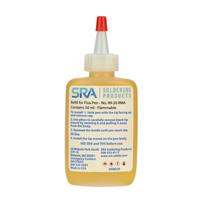Flux, Flux Remover
Results:
406
Manufacturer
Series
Form
Type
Storage/Refrigeration Temperature
Shelf Life
Shipping Info
Flux Type
Shelf Life Start
Melting Point
Diameter
Composition
Process
Wire Gauge
Mesh Type
Results remaining:406
Flux, Flux Remover
Flux is a critical material used in the soldering process to ensure proper bonding between the solder and the materials being joined. Flux comes in different forms such as paste, spray, or liquid, and is applied to the materials being soldered to prevent the formation of metal oxides that can inhibit bonding and create weak joints. During the soldering process, flux also aids in cleaning the surfaces by removing any oxides, dirt, or other contaminants that may be present on the materials. This cleaning action helps to create a clean and even surface for the solder to flow around and adhere to the material. Some fluxes can leave residue after the soldering process is complete. This post-soldering residue can be removed using rosin activated, ionic, or lead-free flux remover. Rosin activated flux remover is typically used for removing rosin-based flux residues, while ionic flux remover is more effective for removing water-soluble flux residues. Lead-free flux remover is specifically designed for removing residues from lead-free soldering processes. It is important to choose the correct type of flux for the materials being soldered, as well as the specific application. Different types of fluxes are available, each with its own unique properties and characteristics. For example, some fluxes may contain lead, while others are lead-free. The choice of flux depends on the specific requirements of the task, as well as any regulatory or environmental considerations. In summary, flux is a crucial component of the soldering process that helps to prevent oxidation, clean surfaces, and create strong bonds between the materials being joined. By choosing the correct type of flux and using appropriate flux remover, technicians can ensure the quality and reliability of their soldering work, while also meeting regulatory and environmental requirements.




















